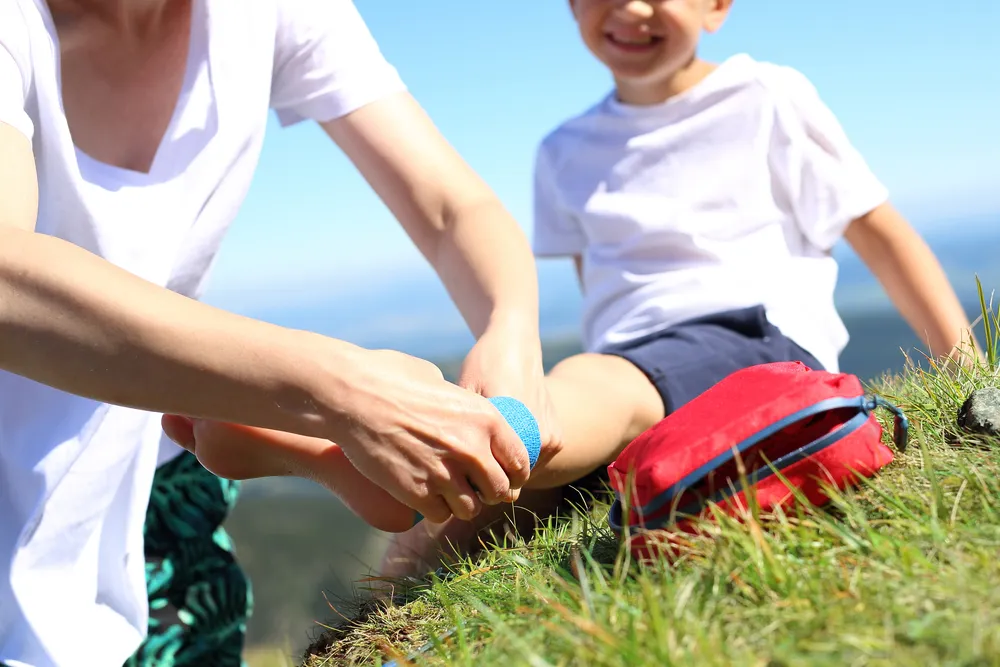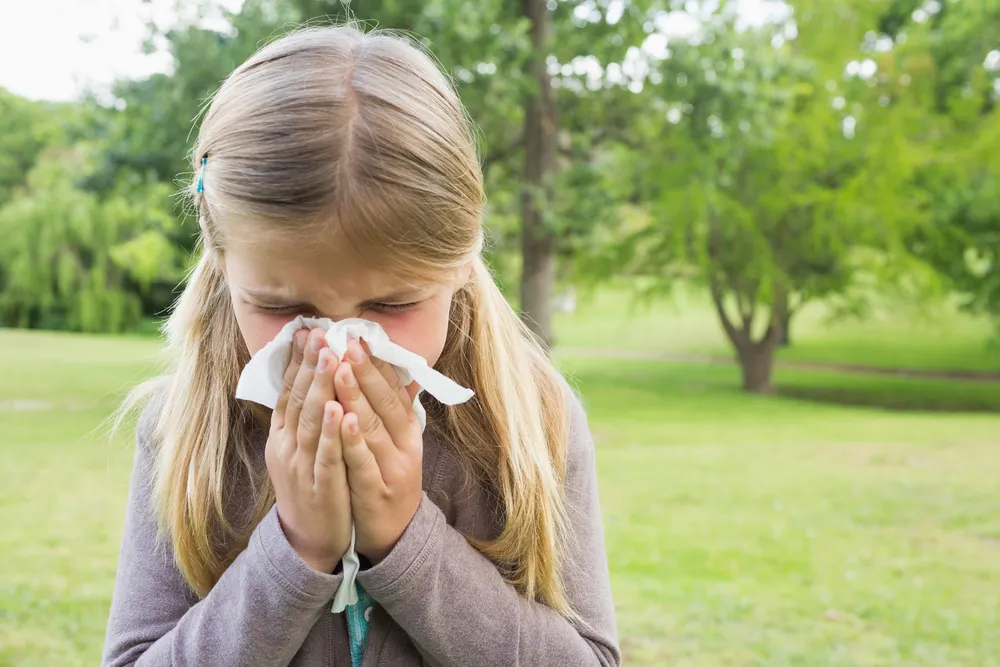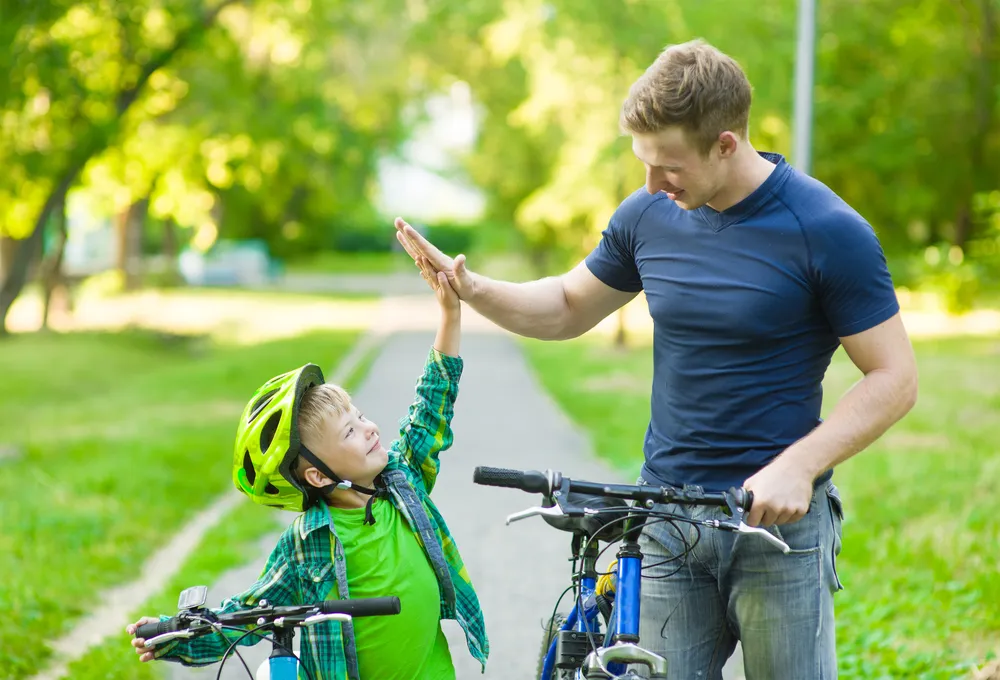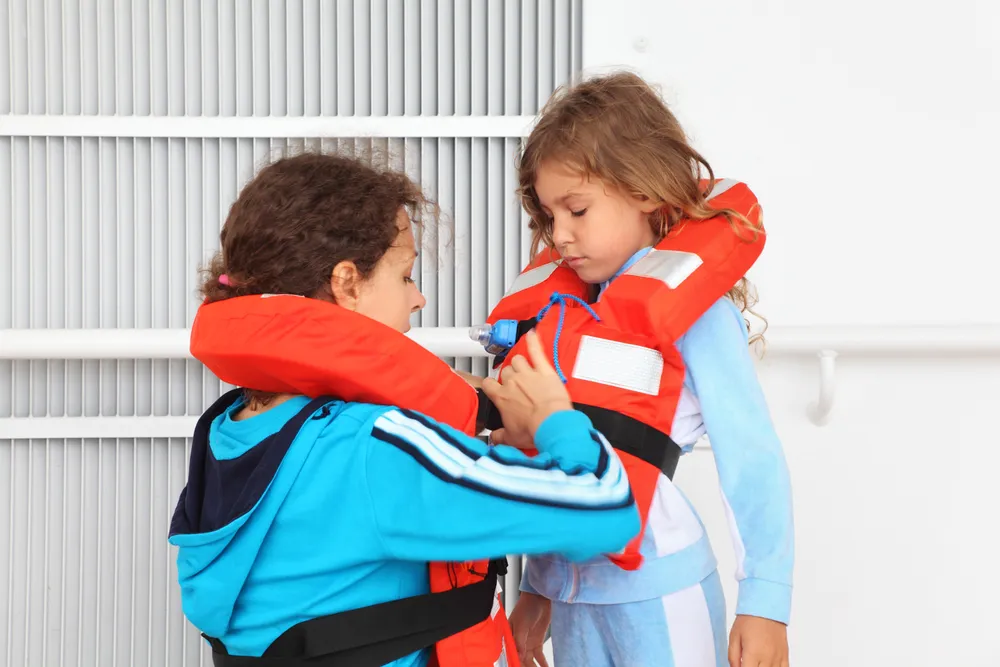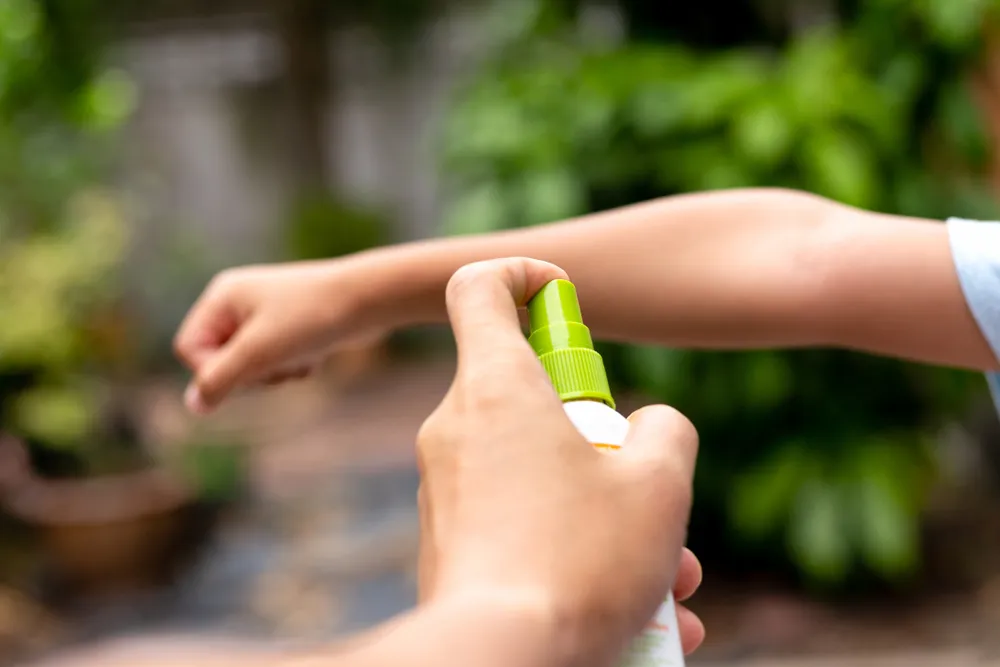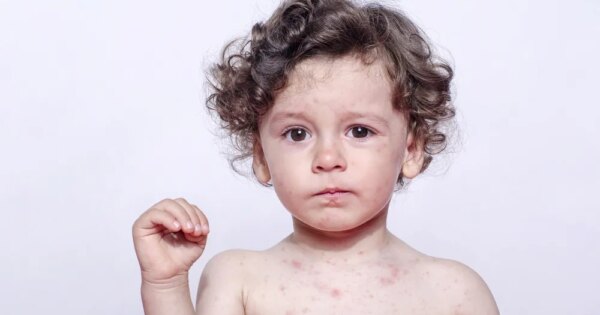While your kids may be tempted to stay inside to play video games and watch television, the warmer weather is the perfect reason to get your children outdoors for some exercise. While there is much fun to be had outdoors, there are precautions that should be taken to make sure it’s an enjoyable and safe experience for your little ones.
In the spirit of summer, here are 12 tips to reduce the risk of danger for your kids when they’re enjoying the Great Outdoors.
Get a First Aid Kit Together
To be prepared for summertime, put together (or buy) a first aid kit that is fully stock with everything you might need. This should include, at a minimum, band-aids, gauze, antiseptic wipes, tape, antibiotic ointment, triangle bandages, safety pins, hydrogen peroxide, a tick key, medical gloves, scissors, ice packs, calamine lotion, children’s Tylenol, and children’s Pepto Bismol.
Keep a stash at home and make sure you have a travel size that you can take on day-trips or hikes. Taking a first aid course, if you haven’t already, can also help you feel prepared for any injuries that may happen outdoors this summer.
Prepare for Allergies
If your child has life-threatening allergies, you’ve probably already got a plan for how to keep them safe (think EpiPen). Not much will change with the arrival of summer – just ensure that their device remains close to them, perhaps even in a little fanny pack, as keeping it accessible to them can become more challenging as they start to dress for hotter weather and are less like to be carrying around a backpack.
If your child has seasonal allergies, don’t forget to stock up on children’s allergy medication or make a visit to your doctor to look at your options. Summer is much more fun for you and your kiddo without the dripping nose, scratchy throat, and itchy eyes.
Talk about Stranger Danger
Every parent has their own way of talking to their child about what’s commonly called “stranger danger” and while it’s important year-round, summer weather tends to mean children spend more time outside. Toddlers and young children are naturally more trusting and curious, so it’s important to talk to them about safety early on. A good easy-to-understand rule for toddlers and young children is that they must never go anywhere alone or even with a friend without checking with you (or another caregiver) first. As they get a little older, talk to them about how to find a safe person to ask for help if they get lost and how it’s not appropriate to take food offered by a stranger, help a stranger look for a lost dog, or get in a car with someone they don’t know.
Another safety measure that has been growing in popularity is to pick a safe word that only you and your child know. You can share that word with anyone who needs to know it (other family members or babysitters, need be) but teach your child to ask anyone who tries to pick them up to ask what the safe word is. If the stranger doesn’t know the answer, teach your child to scream, ask for help from people nearby, or run away.
Routinely Check the Outdoor Space
If your kids will be playing in the backyard, it’s a good idea to check it over regularly, once or twice a week. Remove any large sticks and brush, animal feces, and garbage, put away tools, and properly store outdoors toys.
If you’ve got a pool, make sure that it’s fenced off and routinely check the fence and gate over for damage. This quick tidy up should only take a few minutes (depending on how big your property is), but it keeps your kiddos safe and yard looking nice!
Create and Communicate Boundaries
Let’s begin by acknowledging that what boundaries feel safe and appropriate will completely depend on you, how well you know your neighbors, the age of your child, and where you live (busy city versus rural road, for example). There’s no right or wrong answer here.
Personally, I’m all for letting children play outside unsupervised once they’re old enough, but it’s important to set boundaries on where your child is allowed and not allowed to go. Can they go to the nearby park? Into the wooded area behind your house? Near the pond? To their neighbors’ 1 door down? Two doors down? Down the street? Are they allowed to cross the street alone? With a friend? Or only with an adult present? Do they need to come inside and ask you before they go somewhere else to play or are you comfortable with giving them a radius they can move freely within?
It’s critical that you decide and communicate these boundaries and then teach your child how to be safe within them, especially if there’s road or water safety involved. It’s also important to revisit these boundaries because those boundaries may expand or shrink as yous child gets older or you change neighborhoods.
Check for Ticks
Tick bites and Lyme Disease seem to be making headlines more every year, but there are a number of ways to keep your children safe that range in intensity. The easiest way to prevent a tick from latching on to make sure your child is covered up, opting for long-sleeve shirts and pants when playing in tick-infested areas such as woods, or grassy and swampy areas. Remember that not all covering clothes will be too hot if you buy breathable items! Check the clearance rack at an outdoor store (like MEC or REI) for these types of clothes.
Using a tick-repellant spray is another good way to prevent bites. You can purchase a child-safe spray at the drugstore, but the CDC has also approved the use of essential oils including peppermint, rosemary, lemongrass, cedar, and thyme oil. Just remember that these oils should be re-applied every 30 minutes.
If you live in a heavily infested area, you may choose to buy Permethrin-treated clothing, which has been deemed safe for children. This spray is not for use on skin but can be used on gear and clothing to kill ticks within 5 to 30 seconds of contact.
Finally, follow up any time spent in a tick-infested area with a full body check over. Know the symptoms of a tick bite and keep a tick key on hand for removing any bugs. If you remove a tick, place it in a jar or sealed Ziploc bag and put it in the freezer in case you end up at the doctor’s and they need to identify what kind it is.
Wear a Helmet
Jumping on the bicycle after dusting it off from storage is something your child is probably looking forward to. Bike riding is a great way to practice balance while also getting some low-impact exercise and exploring the neighborhood. Helmets apply to all sports though– make sure they’re wearing the right helmet for the right sport, as it’s not a case of one helmet fits-all.
While there’s no sweeping federal law requiring kids to wear helmets, there are state or local laws that dictate these rules. Mandated or not, you should be properly fitting your child with a helmet at the beginning of every season it’ll be in use – it could save their life, or prevent a life-altering brain injury from a fall or crash. This isn’t a one-time thing to check off the list either, as children grow quickly. It’s important to make sure their old one still fits or that their sibling’s hand-me-down isn’t too big, as an improperly fitted helmet severely reduces its effectiveness.
If your child falls and hits their head while wearing the helmet, replace it immediately, even if it doesn’t look damaged. If impact has occurred, the structure and integrity of the helmet are compromised (it did its job!) and it won’t protect your kiddo’s noggin’ effectively during the next fall. This applies to all sports.
Learn Their Surroundings
Kids may be eager to camp or hit the trails or simply explore the woods out back, and that should be encouraged! However, it’s important to remember that the weather may shift, the trail may peter out, or your kid may fall or hurt themselves outdoors.
It’s important to teach kids how to navigate using landmarks and how to stay calm and signal for help if they’ve been separated from a group. You could even give them a whistle or flashlight when you’re camping or hiking, to be safe.
Be Water Wise
You should always supervise kids when they’re having fun in or near a body of water, as drownings are the leading cause of injury death for children aged 1 to 4, according to the Center for Disease Control and Prevention (CDC). Backyard pools are the most common culprit, but be wary around all bodies of water. If you have an inground pool, one of the best ways to keep children (both your and neighbors’) safe if to fence it off completely with a latching gate.
Putting your child in a formal swimming program is an important step to help them survive if they fall into the water or swim too far offshore. You may be tempted to not sign up for another extracurricular, but swimming lessons are so much more than that. Many parents don’t know that Infant Self-Rescue classes exist, in which an instructor will teach your child as young as 6 months old how to survive should they end up in the water. In these classes, children learn through operant conditioning how to put themselves into a face-up float after being tipped into the water face-down (simulating a fall). Whether you choose to enroll your infant in classes like these is up to you and may depend on a number of risk factors, but it’s worthwhile to consider how you’ll equip your child for an emergency situation.
Finally, if you’re out on a boat, make sure your kids are wearing a proper lifejacket at all times in case they go overboard. It’s also important to tell your kids to stay away from rivers and streams unless they ask your permission, particularly in Spring, as they can get swept away by strong currents.
Keep Them Hydrated
Children are much more prone to dehydration than adults because their bodies can’t cool down as efficiently. This is a greater risk when the temperature rises in the summer and kids are spending more time outside. Kids often don’t remember to drink fluids or have the self-awareness to notice and report symptoms of dehydration.
As a parent, you have to ensure they are getting plenty of water – enforcing “beverage breaks” every 20 minutes when they’re out playing is a good guideline. During the hotter months, get them used to drinking healthy beverages at every meal to keep them hydrated as well!
Another way to ensure they’re drinking enough is to get them their own water bottle with a fun design! I’ve known many young children who proudly carry around their kid-sized Contigo, Camelback, or Klean Kanteen, taking sips regularly because they have their very own bottle.
Teach Them to Bug Off
Well, not literally – but you can teach your kids how to reduce the chance of being bitten or stung by an angry insect. Some easy tips to avoid a bad bite is to avoiding running barefoot on grass and avoid drinking from soda cans outside, as bugs love to congregate around sweet liquids. It’s also important to get your child used to wearing bug spray early on, so make sure you have a kid-safe spray or lotion accessible so they can put it on before going out to play on buggy days.
Don’t Get Burned
One of the first things you should do before letting your kids play outside on a warm summer day is to apply sunscreen. Getting a sunburn is no fun for a kid and it can double their risk of developing skin cancer later in life. Make sure you’re using sunscreen with a sun protection factor (SPF) of 30 or higher and know when to reapply the lotion, for example after swimming. You also should be sure to check that the sunscreen isn’t expired! This may not be a problem for you if you’re regularly applying it to multiple kids, but I’ve gotten a sunburn before even though I had applied sunscreen because when I checked afterward, it was almost 2 years past the expiration date!
Avoid Poisonous Plants
It’s not just bugs that kids need to be wary about – even plants can bring an otherwise fun outing to an end. Education can go a long way to help your child avoid touching toxic plants, so take the time to teach them what common poisonous plants in your area look like and what they’re called.
This is especially important if you live in an area where wild poisonous berries or mushrooms grow, as it’s not far-fetched to think your child might confuse them with foods they’re used to eating at snack time! If your child has a reaction after touching or ingesting a plant you suspect may be poisonous, take a photo of it to show an expert after you’ve called a poison center (or for emergency medical help if needed).

